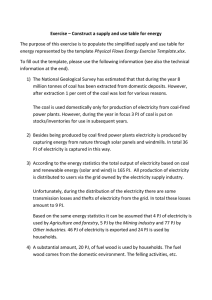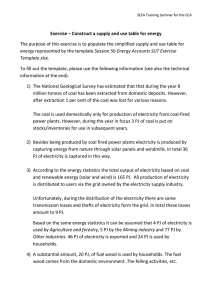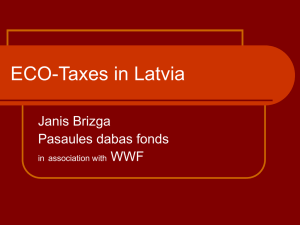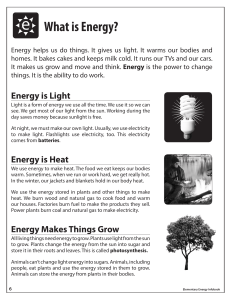Extra Ordinary Guidance notes for KS3 Teachers and Helpers These
advertisement
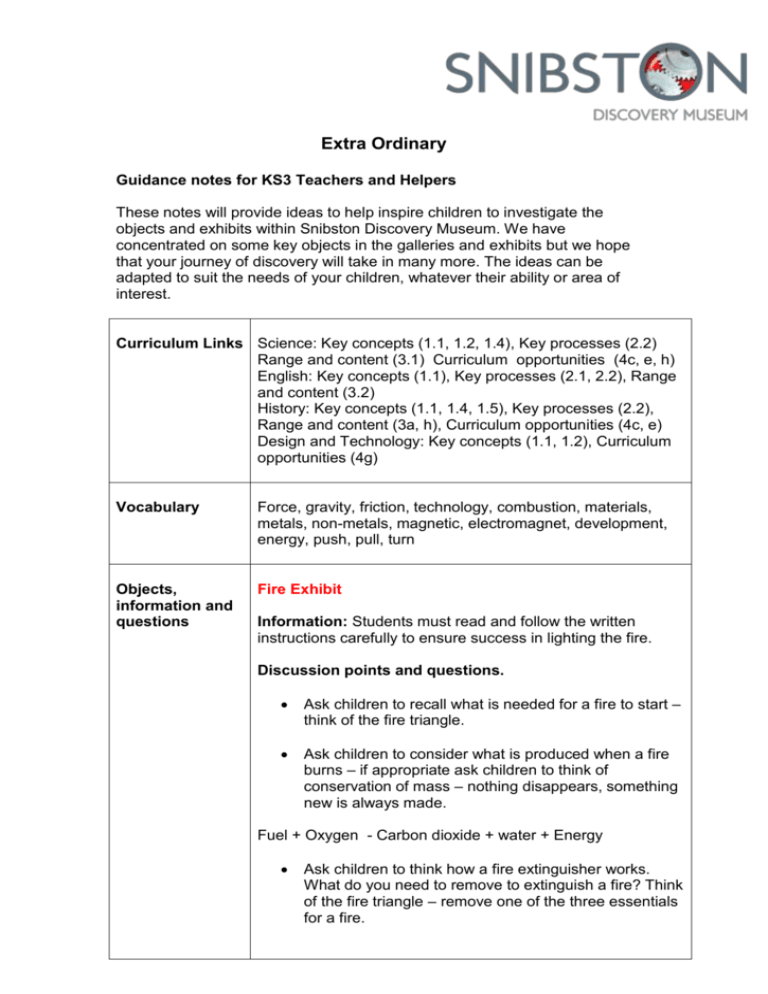
Extra Ordinary Guidance notes for KS3 Teachers and Helpers These notes will provide ideas to help inspire children to investigate the objects and exhibits within Snibston Discovery Museum. We have concentrated on some key objects in the galleries and exhibits but we hope that your journey of discovery will take in many more. The ideas can be adapted to suit the needs of your children, whatever their ability or area of interest. Curriculum Links Science: Key concepts (1.1, 1.2, 1.4), Key processes (2.2) Range and content (3.1) Curriculum opportunities (4c, e, h) English: Key concepts (1.1), Key processes (2.1, 2.2), Range and content (3.2) History: Key concepts (1.1, 1.4, 1.5), Key processes (2.2), Range and content (3a, h), Curriculum opportunities (4c, e) Design and Technology: Key concepts (1.1, 1.2), Curriculum opportunities (4g) Vocabulary Force, gravity, friction, technology, combustion, materials, metals, non-metals, magnetic, electromagnet, development, energy, push, pull, turn Objects, information and questions Fire Exhibit Information: Students must read and follow the written instructions carefully to ensure success in lighting the fire. Discussion points and questions. Ask children to recall what is needed for a fire to start – think of the fire triangle. Ask children to consider what is produced when a fire burns – if appropriate ask children to think of conservation of mass – nothing disappears, something new is always made. Fuel + Oxygen - Carbon dioxide + water + Energy Ask children to think how a fire extinguisher works. What do you need to remove to extinguish a fire? Think of the fire triangle – remove one of the three essentials for a fire. There are several types of fire extinguisher, what does each remove from the fire triangle? Carbon Dioxide - Displaces oxygen from the area Water - Cools the area and removing the ignition energy Powder - Smothers the fuel by stopping oxygen getting to it Blanket - Prevents oxygen form getting to the fire Foam - Cools and smothers the flames Links Combustion engine Beam engine (burn fuel to produce steam) Coal Mini and hoist Information: A large, temporary magnet is formed when the circuit is completed – when the children flick the switch. When the switch is turned the other way the metal is no longer magnetic. The same technology is used to receive Morse messages, in electric door bells, burglar alarms etc. Discussion points and questions How could the children investigate which materials could be used to make an electromagnet? Ask children why temporary electromagnets can be more useful than permanent magnets. (Think about roller-coaster rides and lifts – what acts as a brake?) Forces – Where will you find forces acting when the mini is being lifted? Think about friction, gravity, upthrust, air pressure etc. Links Morse code machine Telecommunications Generating Electricity Information: It is worth the children spending time to read the instructions on this exhibit. It might be beneficial taking the children to it in smaller groups. This exhibit helps to explain the issues with the supply and demand of electricity. Discussion points and questions Yr 9 – What energy changes take place in the process of generating electricity? Thermal Energy Chemical – Kinetic – Electrical Coal – Steam turns turbine – Electricity generated Light Energy Kinetic Energy Energy ergy What are the advantages and disadvantages of using coal (a non-renewable resource) to generate electricity? Pollution, Sustainability, cost, damage to environment through extracting. Relatively cheap commodity, few other options at the minute, technology is changing to develop ways of reducing pollution, provides us with energy until other sources are found. Links Wind Turbines




